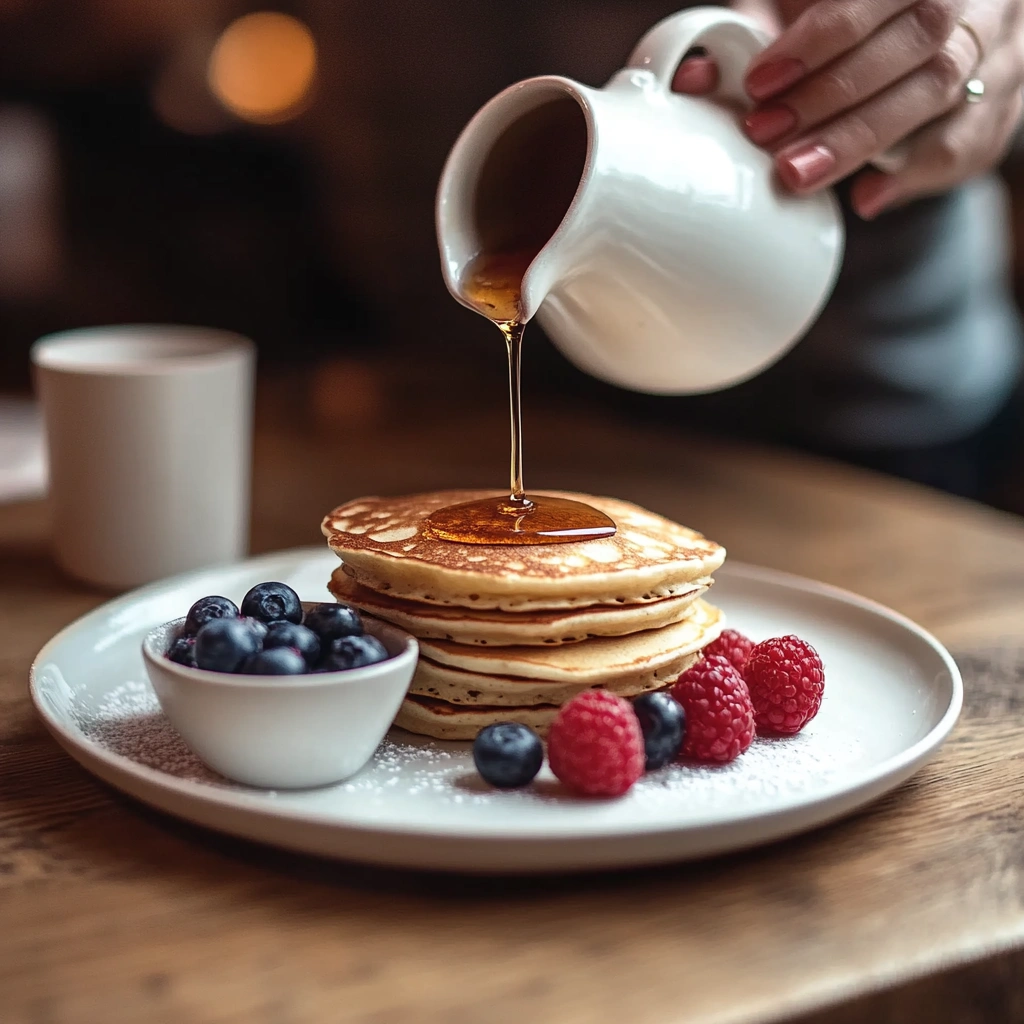f you’ve ever had pancakes at a diner or restaurant, you’ve probably wondered, “Why are restaurant pancakes so fluffy?” Seriously—homemade pancakes are great, but they rarely match that soft, airy, melt-in-your-mouth texture. So, what’s the secret? Spoiler alert: It’s not just about the ingredients—it’s how they’re used.
Let’s dig into the fluff factor and uncover why restaurant pancakes reign supreme.
The Secret Ingredients Behind Fluffy Pancakes
1. The Power of Buttermilk
Let’s start with the obvious: buttermilk. Restaurants almost always use buttermilk in their pancake batter. Why? It’s tangy, rich, and—here’s the science-y part—acidic. When buttermilk reacts with baking soda, it creates carbon dioxide bubbles. Those bubbles are what make pancakes rise and puff up like little clouds.
Pro Tip for Home Cooks: Don’t have buttermilk? No problem. Mix a cup of regular milk with a tablespoon of lemon juice or vinegar. Let it sit for 5 minutes, and boom—you’ve got a quick buttermilk substitute.
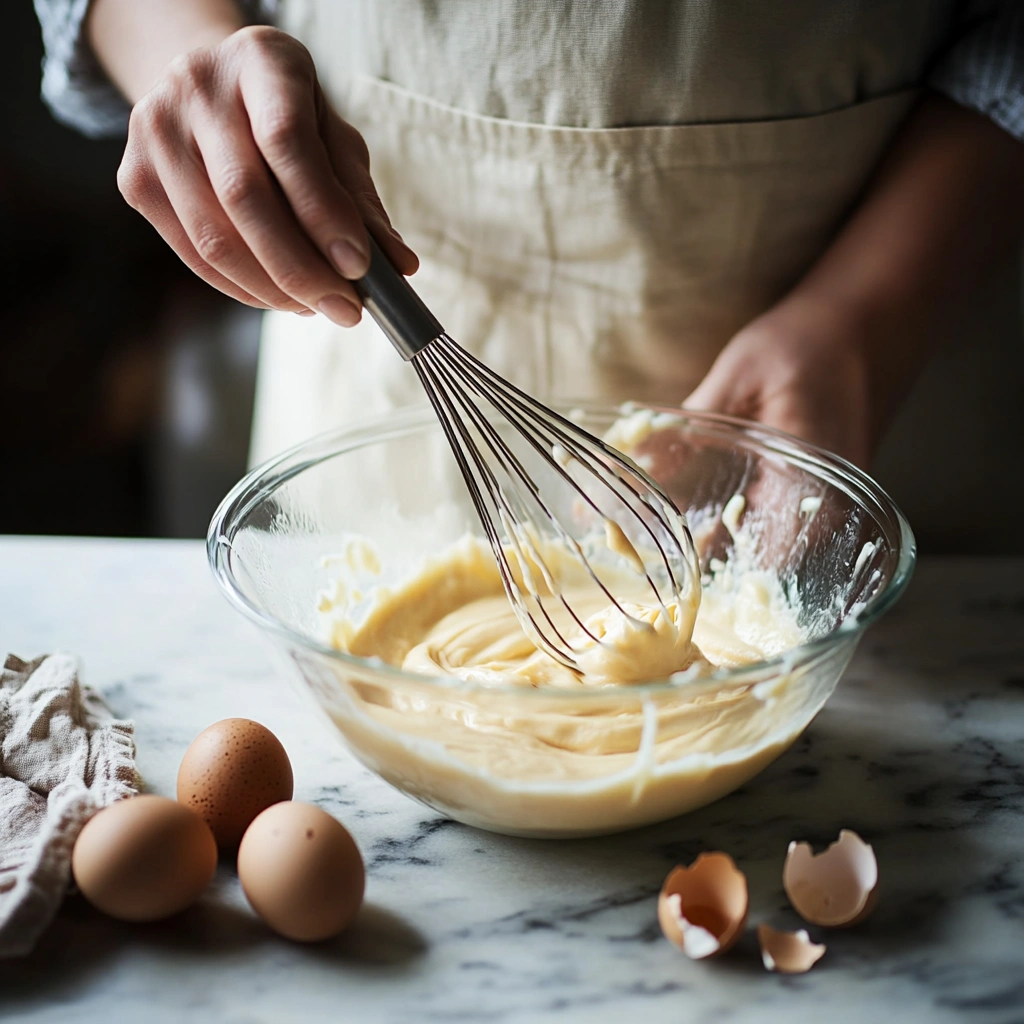
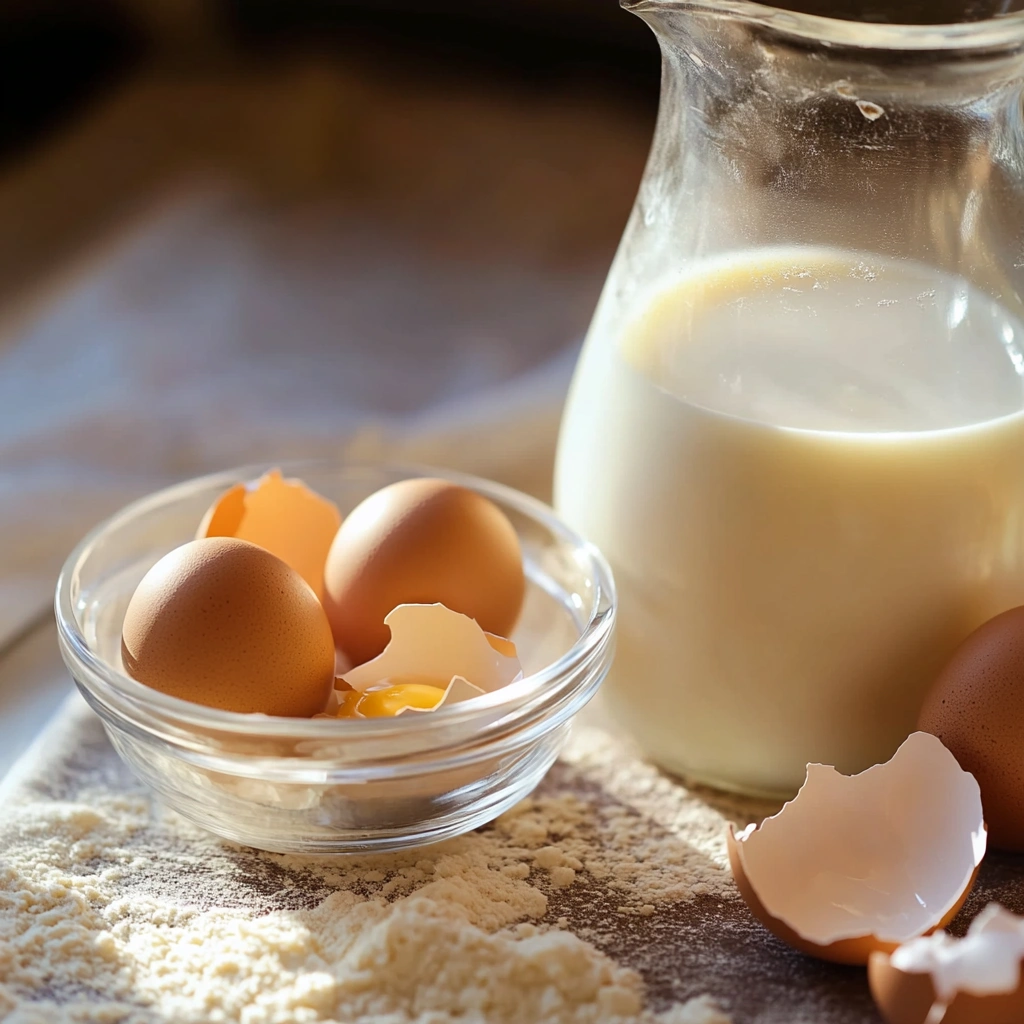
2. The Egg White Trick
Okay, here’s a fun restaurant hack: separating the egg yolks and whites. Many chefs whip the egg whites into stiff peaks and fold them gently into the batter. This adds air to the mixture, making it super light and airy.
Does it take a little extra time? Sure. But trust me—it’s worth it. Your pancakes will have that melt-in-your-mouth fluffiness that’s hard to beat.
3. More Baking Powder, Please
While baking soda works wonders with buttermilk, baking powder is like the MVP of pancake ingredients. Restaurants often use double-acting baking powder, which means it works twice: once when it gets wet and again when it’s heated. This gives pancakes an extra rise, even if the batter sits for a bit.
Quick Tip: Check the expiration date on your baking powder. Old baking powder = flat pancakes.
4. The Magic of Fat
Let’s be real—restaurants don’t skimp on the good stuff. They often use melted butter or even a bit of oil in the batter. The fat helps create a tender texture, so you’re not biting into something dry or chewy. Plus, it adds flavor. Because, let’s face it, butter makes everything better.
5. Sugar, but Not Too Much
Restaurants add just the right amount of sugar to their batter. Too little, and the pancakes lack flavor. Too much, and they can become dense and sticky. It’s all about balance, baby.
The Techniques That Make a Difference
1. The Resting Period
Ever notice how restaurant kitchens are always prepping stuff ahead of time? Pancake batter is no exception. Letting the batter rest for about 10–15 minutes allows the gluten in the flour to relax. This means your pancakes will be tender instead of rubbery. Plus, those bubbles we talked about earlier get more time to form, which equals extra fluff.
At Home: Mix up your batter, then go sip your coffee while it rests. Trust me, it’s worth the wait.
For a fun twist on pancakes, check out this mini pancakes recipe to try bite-sized, fluffy treats at home!
2. The Griddle Game
Restaurants always use a hot, evenly heated griddle. They grease it lightly—just enough to keep the pancakes from sticking—and pour the batter in perfect portions. The consistent heat ensures even cooking, so you get that golden-brown exterior and a soft, fluffy inside.
If you’re using a pan at home, keep the heat on medium. Too hot, and you’ll end up with burnt outsides and raw insides. Nobody wants that.
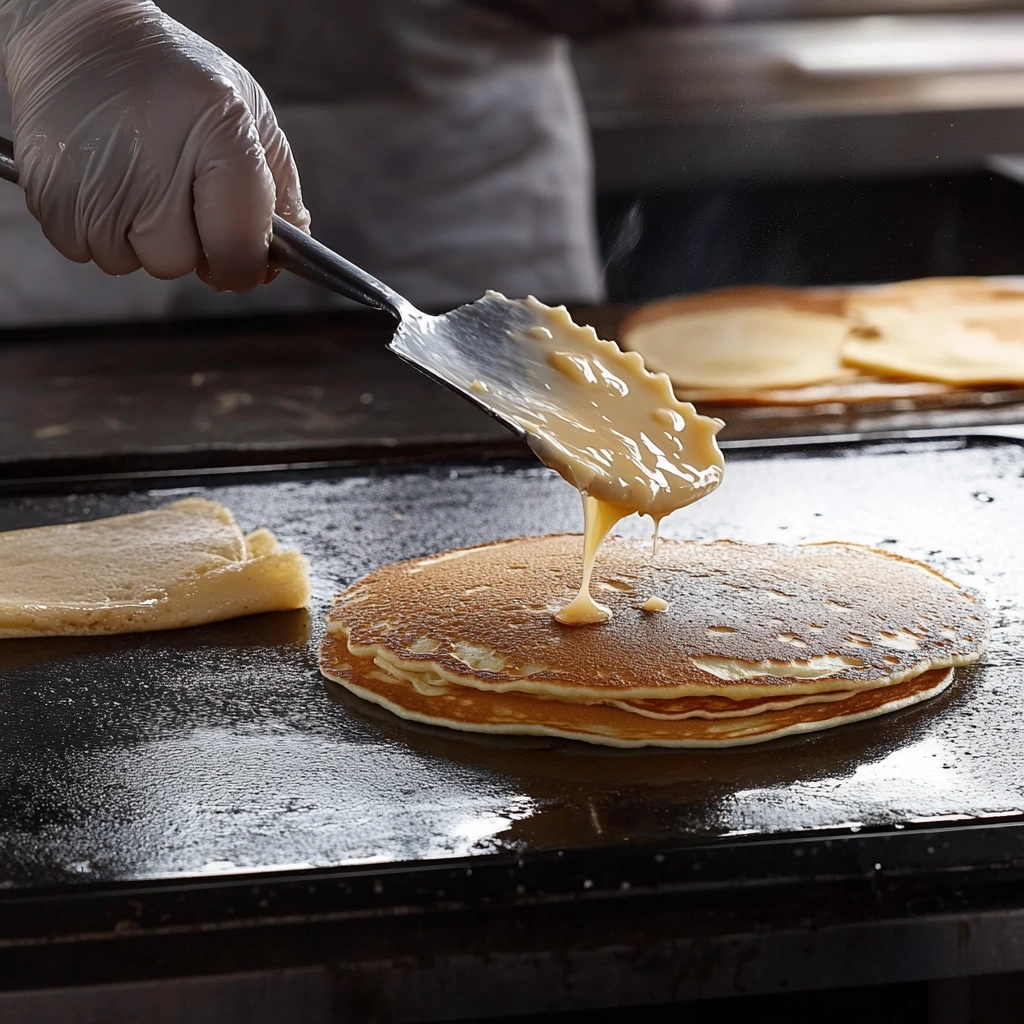
3. The Flip Timing
Here’s the thing: timing is everything. Restaurants know to flip the pancake when bubbles form on the surface and the edges start to look set. Flipping too early or too late messes with the texture and fluff.
Pro Tip: Only flip once. Double-flipping squishes the air out, and we’re not here for flat pancakes.
4. Consistent Batter
Restaurants often use large batches of batter, which helps with consistency. At home, it’s easy to overmix (we’ve all been there), but overmixing develops the gluten too much and makes pancakes dense. Mix until the ingredients are just combined, and then stop. It’s okay if there are a few lumps—those will work themselves out while cooking.
Extra Tricks Restaurants Use
1. Adding Sparkling Water or Club Soda
Yep, some chefs add a splash of sparkling water or club soda to their batter. The carbonation creates even more bubbles, giving the pancakes an extra boost of fluff.
2. Pre-Made Pancake Mixes (But Upgraded)
Surprise! Some restaurants actually start with a pancake mix—but they don’t just use it as-is. They add things like vanilla extract, a pinch of salt, or even a little sour cream to enhance the flavor and texture.
3. Cooking in Rings
Ever notice how diner pancakes are perfectly round? Some chefs use pancake rings to keep the batter in shape while it cooks. Plus, the rings help the pancakes rise straight up, making them extra thick and fluffy.
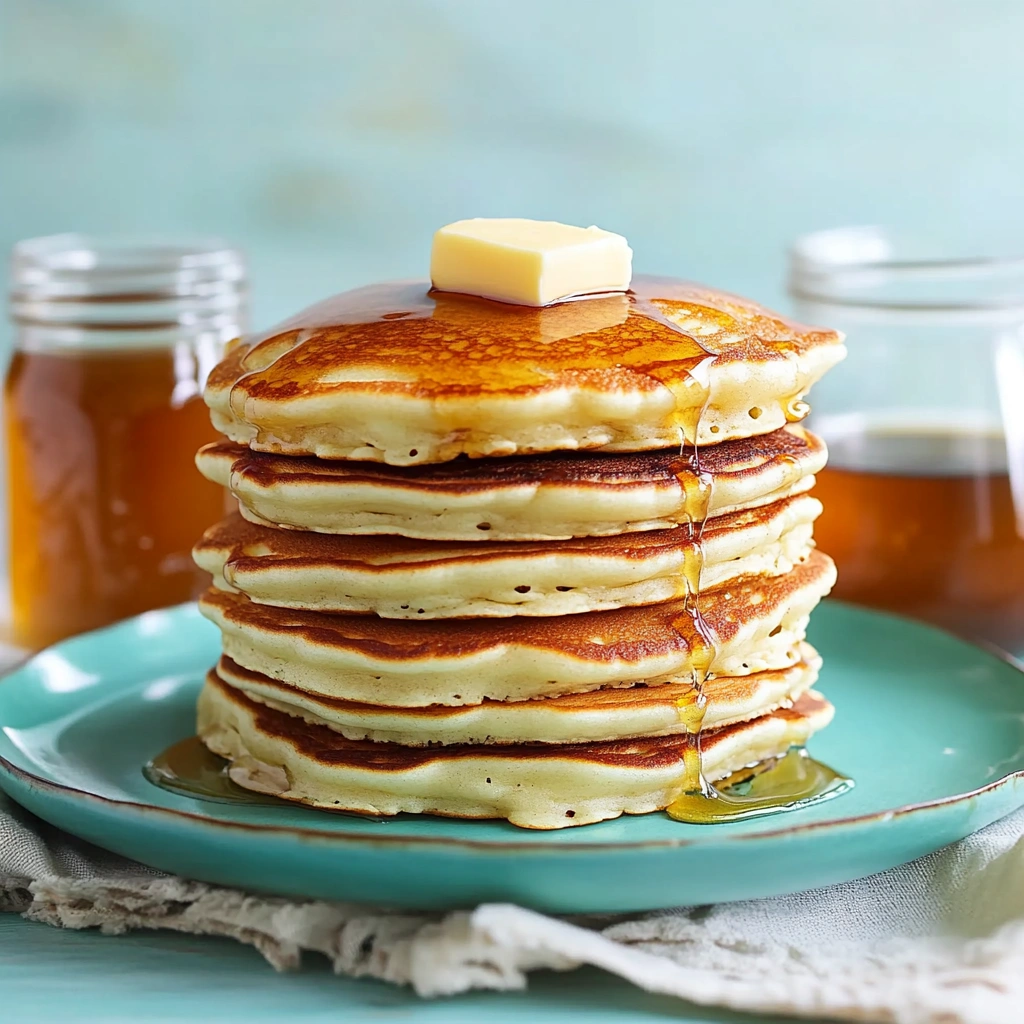
Why Restaurant Pancakes Taste Better
1. Fresh Ingredients
Restaurants usually use fresh, high-quality ingredients, which makes a difference in both flavor and texture.
2. Perfect Portions
They don’t just eyeball the batter—they use ladles or scoops to make sure every pancake is the same size. This helps them cook evenly, which is key for fluffiness.
3. Butter and Syrup Galore
Let’s be honest: restaurants are generous with butter and syrup. That rich combo elevates (oops, almost used the banned word!) the entire pancake experience.
Why Are Restaurant Pancakes So Fluffy Compared to Homemade Ones?
If you’ve ever tried making pancakes at home and felt like they didn’t measure up to the ones from your favorite diner, you’re not alone. Why are restaurant pancakes so fluffy while homemade ones often turn out dense or flat? The secret lies in professional techniques and ingredient ratios. Restaurants use a precise balance of leavening agents like baking powder and baking soda, combined with buttermilk and controlled mixing methods. Additionally, they cook pancakes on commercial griddles with steady, even heat, ensuring perfect texture every time.
At home, inconsistent stovetop temperatures and overmixing can lead to tough pancakes. But by using restaurant tricks—like whipping egg whites separately or letting the batter rest—you can get much closer to that professional fluffiness.
Why Are Restaurant Pancakes So Fluffy Even After Sitting for a While?
One thing you’ll notice about restaurant pancakes is that they stay fluffy even after sitting for a few minutes. Why are restaurant pancakes so fluffy long after they come off the griddle, while homemade ones tend to deflate quickly? The answer lies in the combination of resting time and double-acting baking powder.
When restaurants prepare pancake batter, they often let it rest for at least 10-15 minutes before cooking. This allows the gluten in the flour to relax, preventing toughness. More importantly, double-acting baking powder works in two stages—first when mixed with liquid and again when exposed to heat—ensuring the pancakes keep their airy texture even after cooking.
To replicate this at home, avoid overmixing, let your batter sit before cooking, and make sure your baking powder is fresh.
Why Are Restaurant Pancakes So Fluffy Without Being Too Heavy?
A common mistake when making pancakes at home is adding too much flour or liquid, which can result in either dense or overly thin pancakes. Why are restaurant pancakes so fluffy yet still light and not too heavy? The answer is all about balance.
Restaurants carefully measure their ingredients to achieve the ideal pancake consistency—thick enough to hold shape but not too thick to become dense. They also use just the right amount of fat (like butter or oil) to create a tender texture without making the pancakes greasy.
If you want diner-quality pancakes at home, aim for a smooth, slightly thick batter and use a gentle mixing technique. Overworking the batter develops too much gluten, making the pancakes chewy rather than fluffy.
Why Are Restaurant Pancakes So Fluffy and Perfectly Golden?
Besides their incredible fluffiness, restaurant pancakes always have that perfectly golden-brown surface. Why are restaurant pancakes so fluffy and evenly browned every time? The secret is in the cooking technique and heat control.
Professional kitchens use well-seasoned griddles set at the perfect temperature—around 375°F (190°C). This ensures even cooking and caramelization of the sugars in the batter, creating a beautiful golden color. Home cooks often struggle with temperature control, leading to uneven cooking or burnt edges.
To get the same results, preheat your pan properly and use a light coat of butter or oil. Cooking at medium heat will give your pancakes the best texture and color without burning the outside before the inside cooks through.
FAQs about Why are restaurant pancakes so fluffy
1. What is the secret behind restaurant-style fluffy pancakes?
The secret to why restaurant pancakes are so fluffy lies in using the right ingredients and techniques. Restaurants rely on buttermilk, double-acting baking powder, and whipped egg whites to create air bubbles in the batter. Additionally, letting the batter rest before cooking and using an evenly heated griddle helps achieve that perfect texture.
2. Can I make my pancakes as fluffy as restaurant pancakes at home?
Yes! You can replicate why restaurant pancakes are so fluffy by using similar methods. Try adding buttermilk for acidity, folding in whipped egg whites, and letting the batter rest before cooking. Also, use a medium-heated pan or griddle for even cooking and avoid overmixing the batter.
3. Do restaurants use special flour to make pancakes fluffier?
Most restaurants use all-purpose flour, but the real reason why restaurant pancakes are so fluffy is the combination of leavening agents like baking powder and baking soda, along with proper mixing techniques. Some may use cake flour for an extra tender texture, but it’s not a necessity for achieving fluffy pancakes.
4. How does IHOP make their pancakes so fluffy?
IHOP’s pancakes are famous for their light and airy texture. The reason why IHOP pancakes are so fluffy is their special buttermilk-rich batter, a precise blend of leavening agents, and a consistent cooking method using commercial griddles. They also let their batter rest before cooking, allowing air bubbles to develop for extra fluff.
Conclusion
So, why are restaurant pancakes so fluffy? It’s a mix of science, skill, and smart techniques. From using buttermilk and the right leavening agents to letting the batter rest and nailing the perfect flip, restaurants know how to make pancakes light, airy, and absolutely irresistible.
At home, you can achieve the same fluffiness by following these tips. Use quality ingredients, whip your egg whites, and cook at the right temperature. Knowing why restaurant pancakes are so fluffy means you can now enjoy diner-quality stacks right in your own kitchen. Trust me, your family (and your taste buds) will love you for it!

